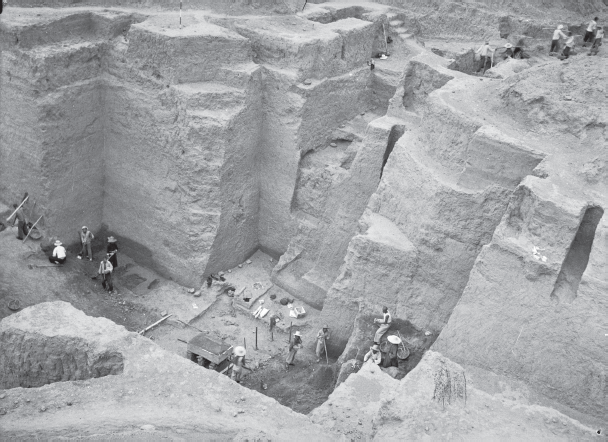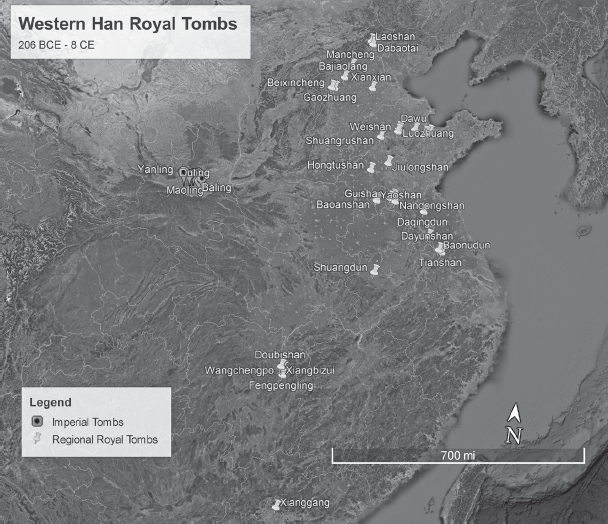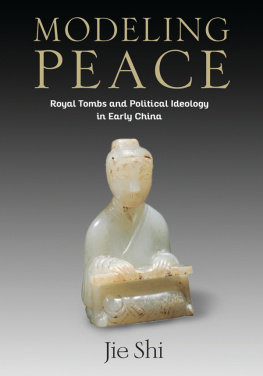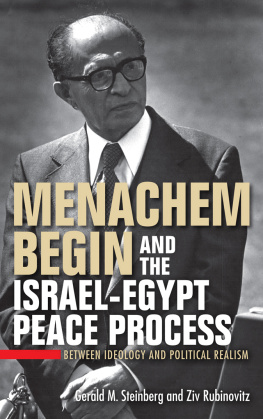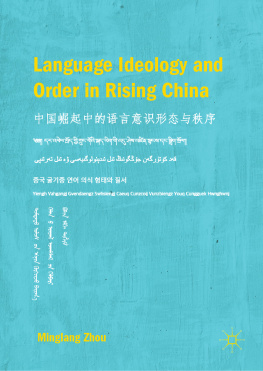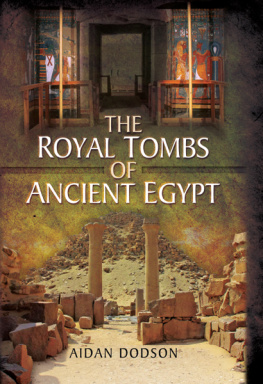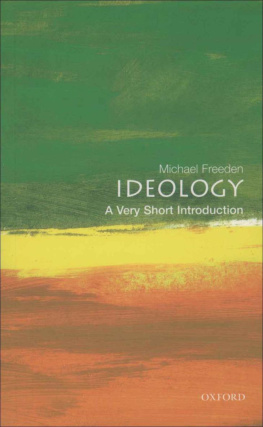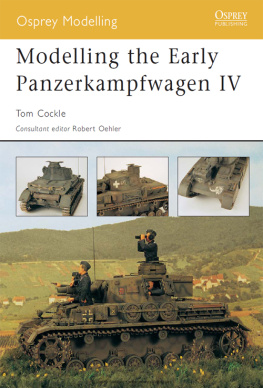Table of Contents
MODELING PEACE
TANG CENTER SERIES IN EARLY CHINA
TANG CENTER SERIES IN EARLY CHINA
Editors
Anthony Barbieri-Low
Li Feng
The dramatic increase of information about Chinas early past made possible by recent archaeological discoveries has reenergized the study of Early China. The Tang Center Series in Early China, sponsored by the Tang Center for Early China at Columbia University and published by Columbia University Press, presents new studies that make major contributions to our understanding of early Chinese civilization and break new theoretical or methodological grounds in Early China studies, especially works that analyze newly discovered paleographic and manuscript materials and archaeological data. The disciplinary focus of the series includes history, archaeology, art history, anthropology, literature, philosophy, and the history of sciences and technology. The time period covered spans from the Neolithic to the end of the Han Dynasty (220 CE) or to the end of the Tang Dynasty (907 CE) for titles in archaeology.
Forthcoming from the series:
Kingly Crafts: The Archaeology of Craft Production in Late Shang China, Yung-Ti Li
Modeling Peace
ROYAL TOMBS AND POLITICAL IDEOLOGY IN EARLY CHINA
Jie Shi
Columbia University Press
New York
Columbia University Press wishes to express its appreciation to the Tang Center for Early China for funding and editorial support in the publication of this book.
Columbia University Press
Publishers Since 1893
New York Chichester, West Sussex
cup.columbia.edu
Copyright 2020 Columbia University Press
All rights reserved
E-ISBN 978-0-231-54920-2
Library of Congress Cataloging-in-Publication Data
Names: Shi, Jie, 1979 author.
Title: Modeling Peace : Royal Tombs and Political Ideology in Early China / Jie Shi.
Other titles: Royal Tombs and Political Ideology in Early China
Description: First Edition. | New York : Columbia University Press, 2019. | Series: Tang center series in early China | Includes bibliographical references and index.
Identifiers: LCCN 2018060751 (print) | LCCN 2019004768 (ebook) | ISBN 9780231549202 (ebook) | ISBN 9780231191029 (Cloth : alk. paper)
Subjects: LCSH: Mancheng Qu (Baoding Shi, China)Antiquities. | Baoding Shi (China)Antiquities. | ChinaKings and rulersTombs. | ChinaPolitics and government221 b.c.-220 a.d. | Social archaeologyChinaBaoding Shi. | EthnoarchaeologyChinaBaoding Shi. | Archaeology and historyChinaBaoding Shi.
Classification: LCC DS797.39.M363 (ebook) | LCC DS797.39.M363 S55 2019 (print) | DDC 931dc23
LC record available at https://lccn.loc.gov/2018060751
A Columbia University Press E-book.
CUP would be pleased to hear about your reading experience with this e-book at .
Cover design: Noah Arlow
Cover image: Hebei Museum
CONTENTS
Chapter One
The Embrace of Body and Soul
Chapter Two
The Union of Husband and Wife
Chapter Three
Integration of Ethnic Han and Non-Han
Chapter Four
The Public King
Chapter Five
The King of Peace
Chapter Six
The King Under the Gaze
Royal tombs, here defined as burials prepared for the rulers of territorial states and their spouses, are among the most important material remains of early Chinese civilization. More than a hundred of them have been discovered, and their monumental scale, sophisticated design, and marvelous contents crystalize the highest artistic and technological ingenuity of ancient China. These royal spectacles were so precious that constructing just one of them might take years or even decades and might consume as much as one-third of the states annual income. They set the highest standard for the lower classes, including officials or commoners, who yearned to emulate but could not surpass them.
The importance of these royal tombs cannot be properly understood without appreciating the fact that they are physically and conceptually distinguished from all other lesser tombs in early China. Our study must take this fact as the point of departure.
The physical distinction of royal tombs has been sufficiently revealed by modern archaeologists, who have conventionally treated royal (and imperial) tombs as an independent typological categorythe top tier of the highest-ranking burials. Among the many excavated early Chinese royal tombs, whose dates range from the Shang (seventeenth to mid-eleventh century BCE) to the Western Han (206 BCE8 CE), the earliest examples include a
Although burials of the Western Zhou (mid-eleventh century to 771 BCE) kings are yet to be identified, archaeologists have unearthed at least sixty-six tombs of Western Zhou vassals or their principal wives, including such local polities as Wei , Jin , Guo , Rui , and Yan .
The discoveries of the royal cemeteries dated to the Eastern Zhou period (771221 BCE), particularly the later Warring States period, have been ample. Up to the present day, about a dozen cemeteries from these regional royal houses have been identified and partially excavated, presenting a complex picture of the social realities of pre-imperial China.
After the fall of the Eastern Zhou, China marched into the age of empire. The First Emperor, Qin Shihuangdi (r. 247210 BCE), who unified China by force in 221 BCE, abolished all the regional kingdoms to ensure his unchallengeable authority. The enthusiasm for constructing ever-greater tombs also reached its zenith. The massive mausoleum of the First Emperor at Mt. Li in present-day Lintong, Shaanxithe largest tomb ever built in China, which features the world-famous terra-cotta army pitsis estimated to cover an area as vast as 56.25 square kilometers. After forty-five years of continuous excavation, only a small portion of this site has been exposed. The central tomb pit, beneath a fifty-five-meter-tall earth mound, measures 355 by 345 meters in area.
During the Western Han dynasty, which replaced the Qin, China witnessed a second wave of constructing lavish royal tombs in the eastern principalities as well as imperial mausoleums near the capital of Changan ( Whereas the Western Han imperial mausoleums, such as the Shang, Zhou, and Qin precedents, either were plundered or have not yet been (fully) excavated, those regional royal tombs are generally far better preserved and published, constituting an ideal data group that has already attracted scholarly attention worldwide.
Lothar von Falkenhausen has observed that from the Western Zhou to the Eastern Zhou period, the differentiation between the tombs of the rulers and the ruled changed from one of degree to one of kind.
Separating royal tombs from other lesser tombs as an independent category was not only a modern practice in archaeology but also an ancient idea with a metaphorical implication. By definition, royal tombs were not just large or richly furnished tombs but tombs built for a special social group, namely kings and their principal wives. Although the people who lived in what is now China learned to build great tombs as early as the Neolithic period (5000 to 3000 BCE), it was not until these skills were combined with an ideology of kingship that royal tombs came into being.


